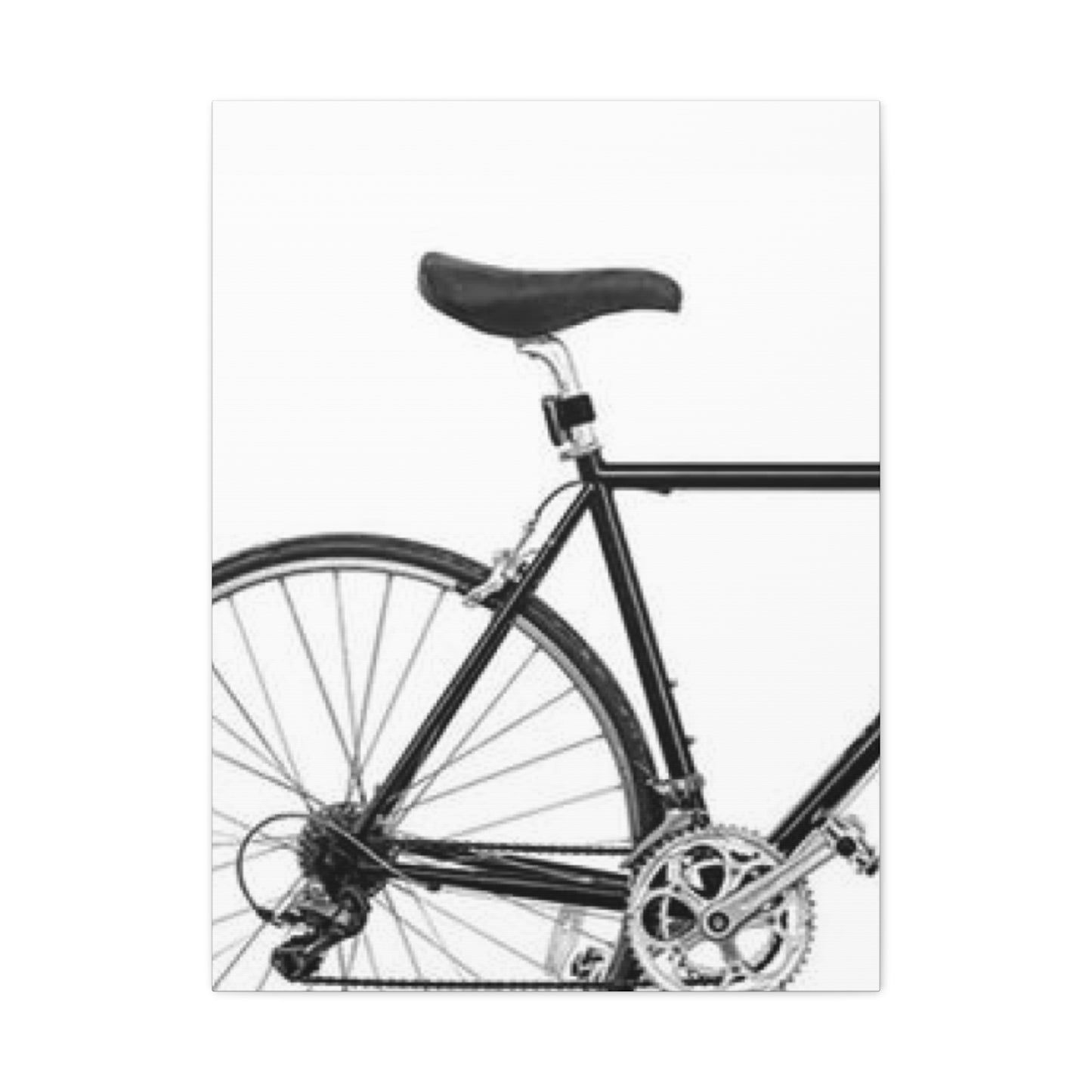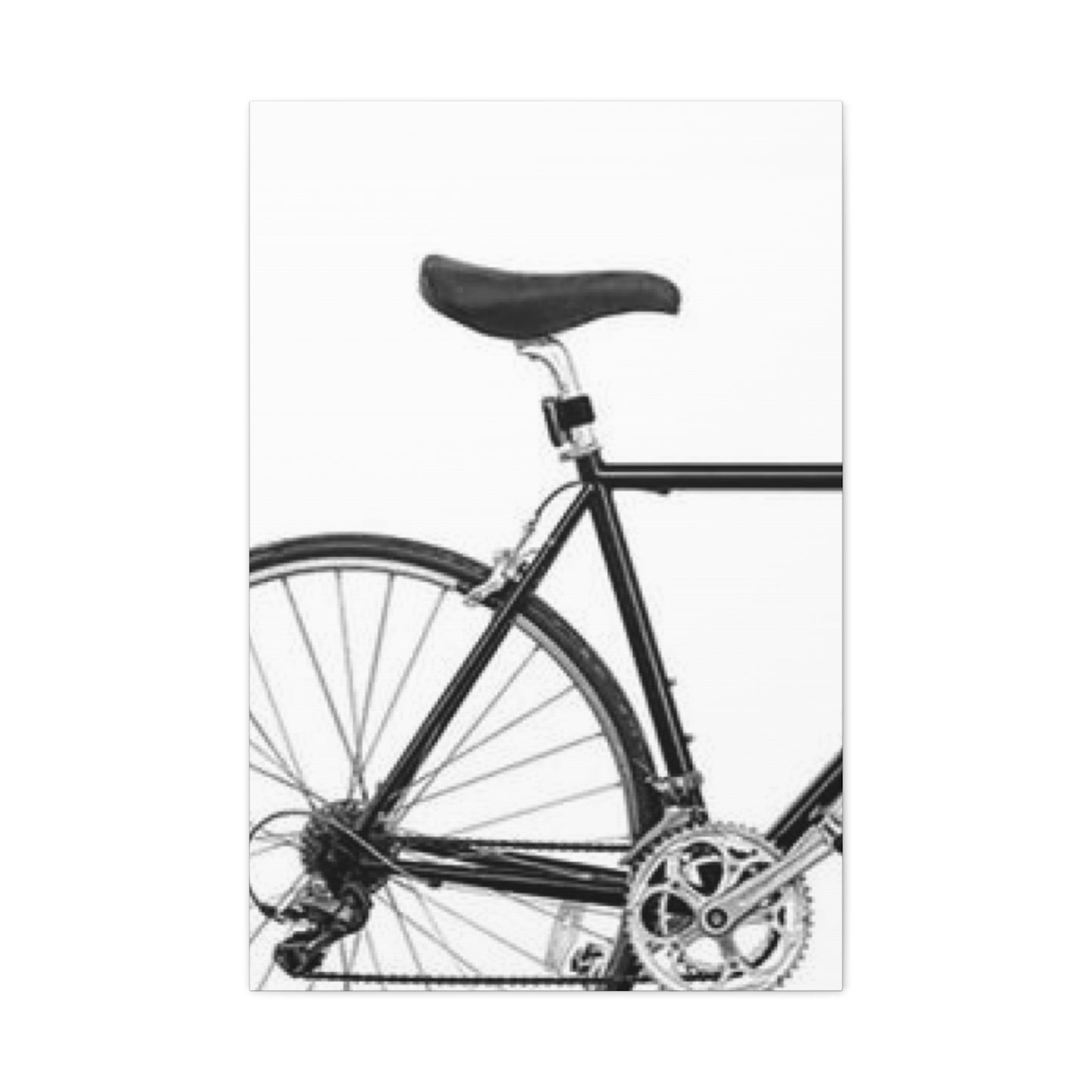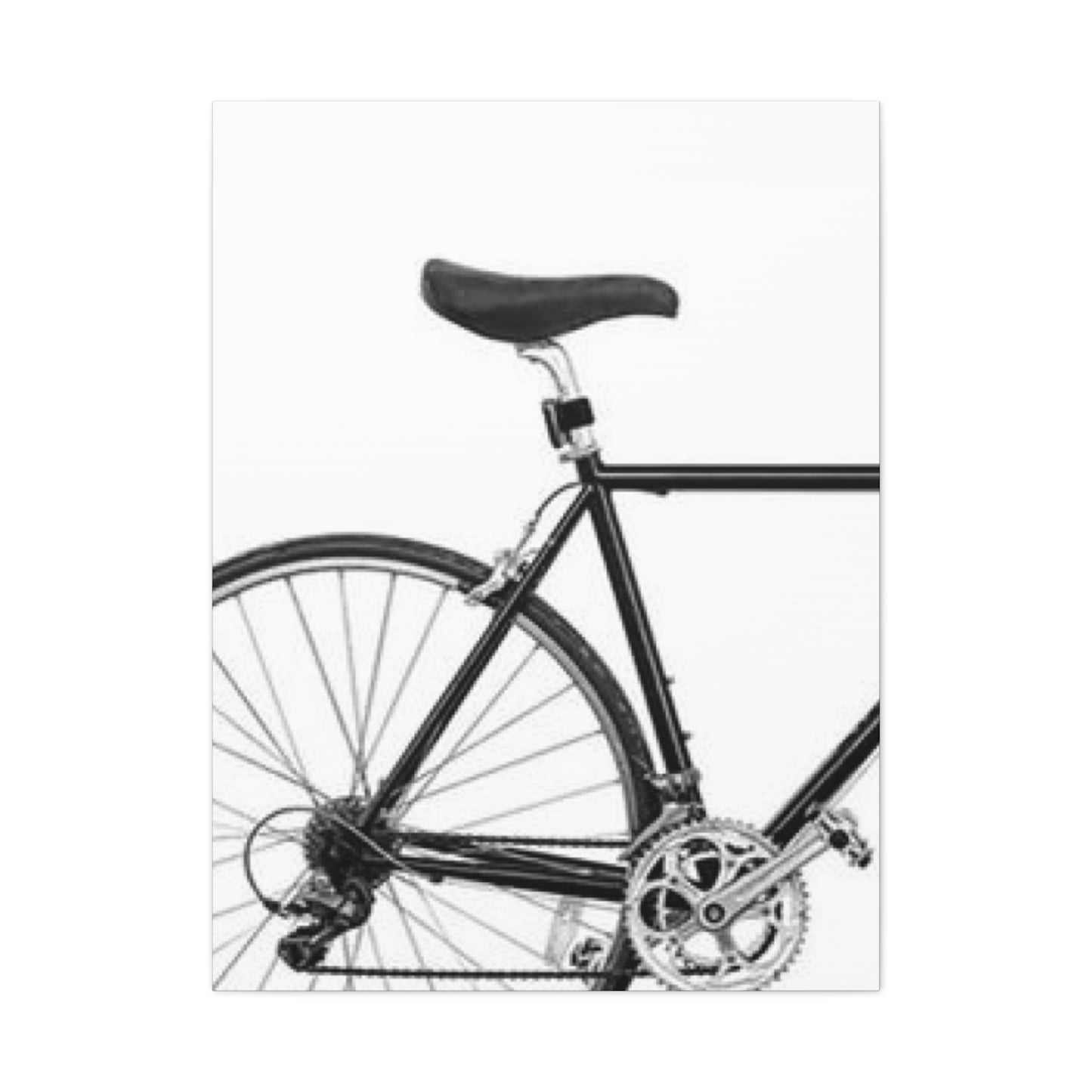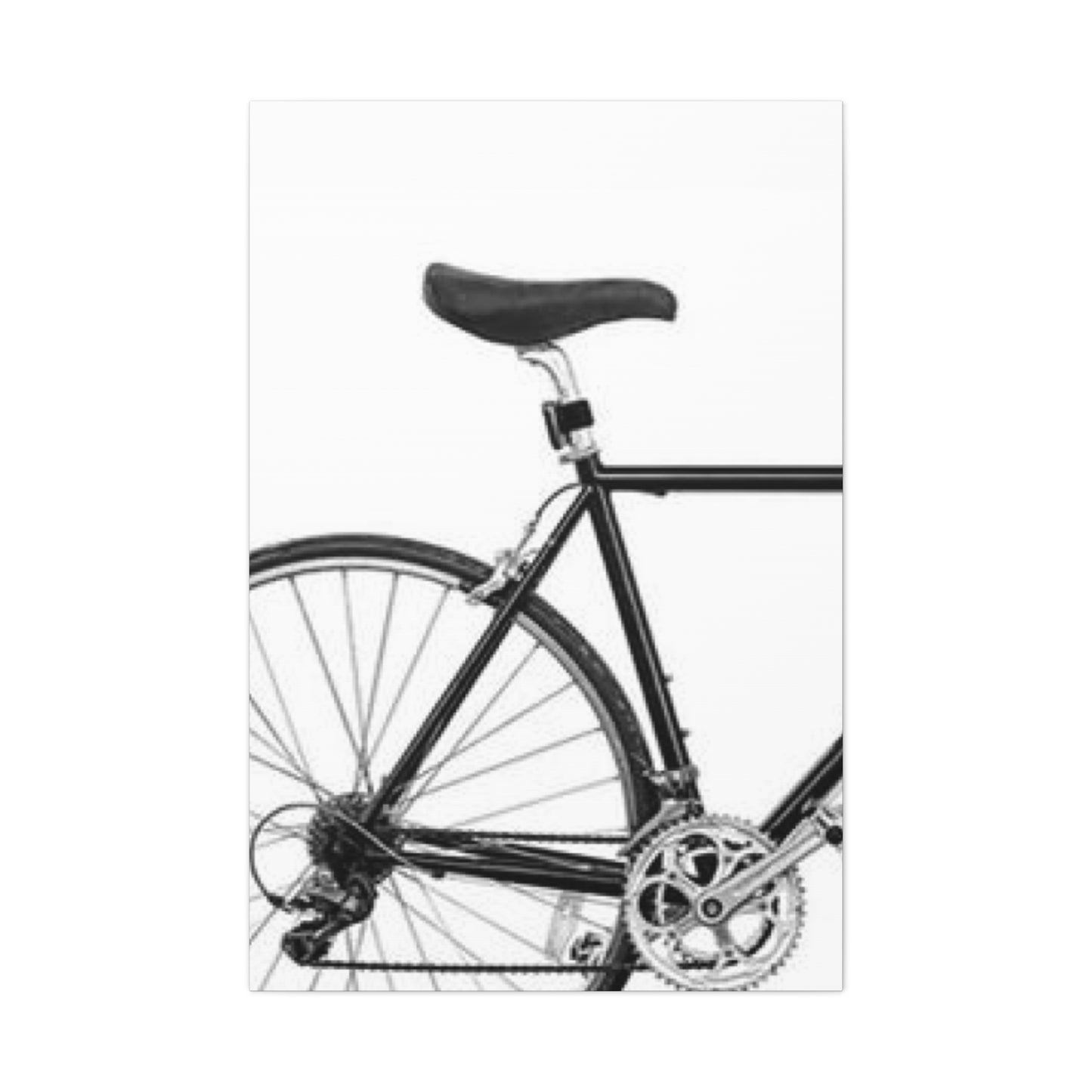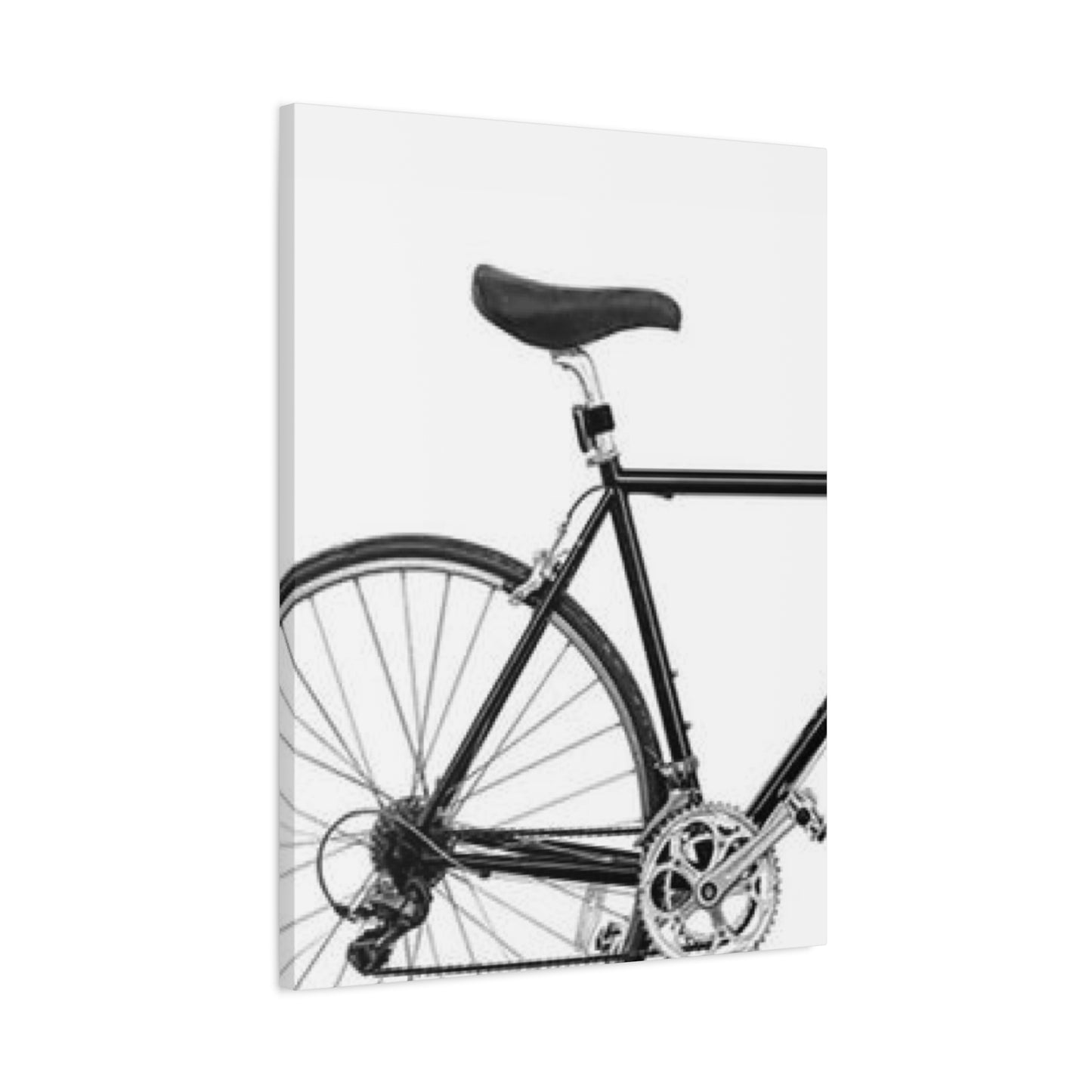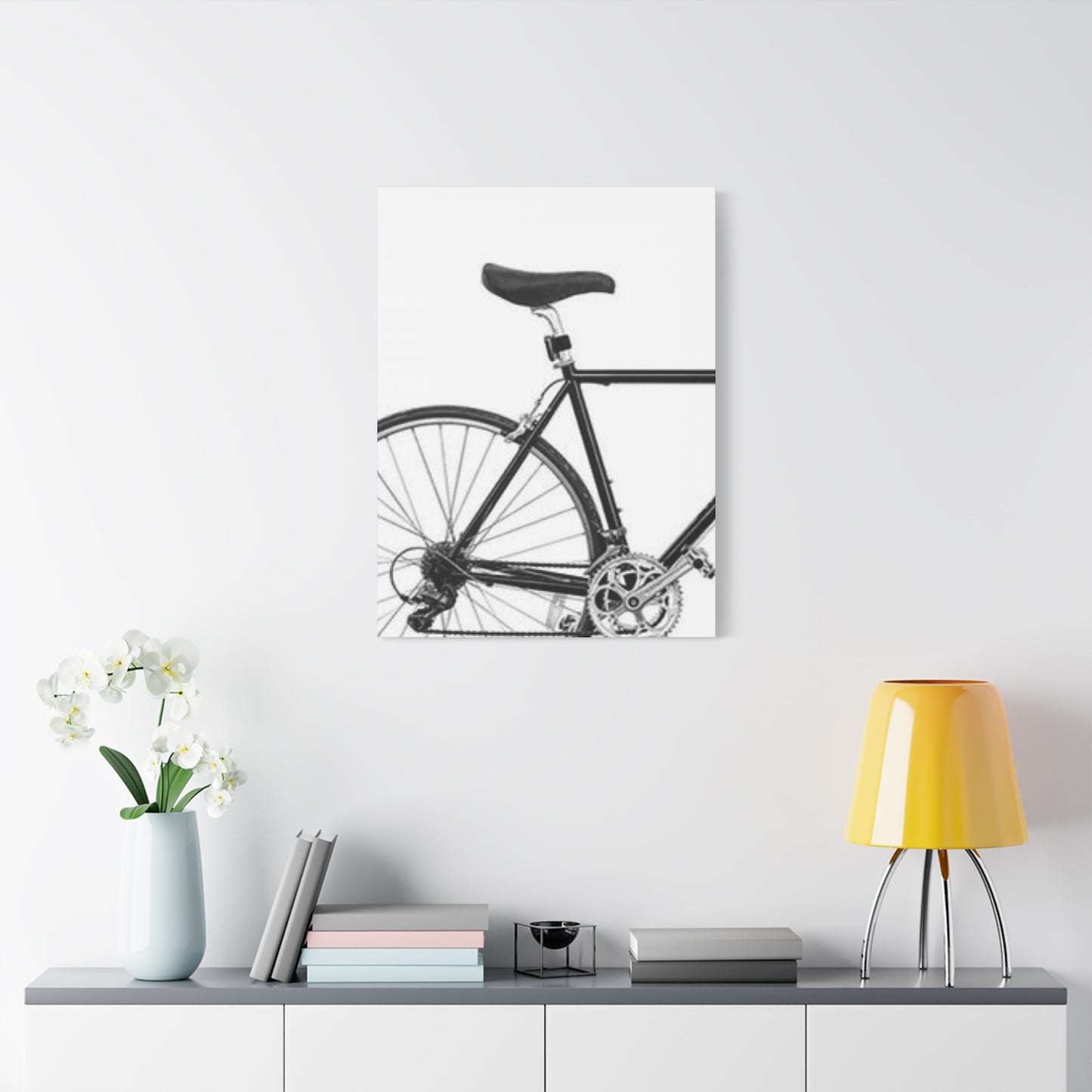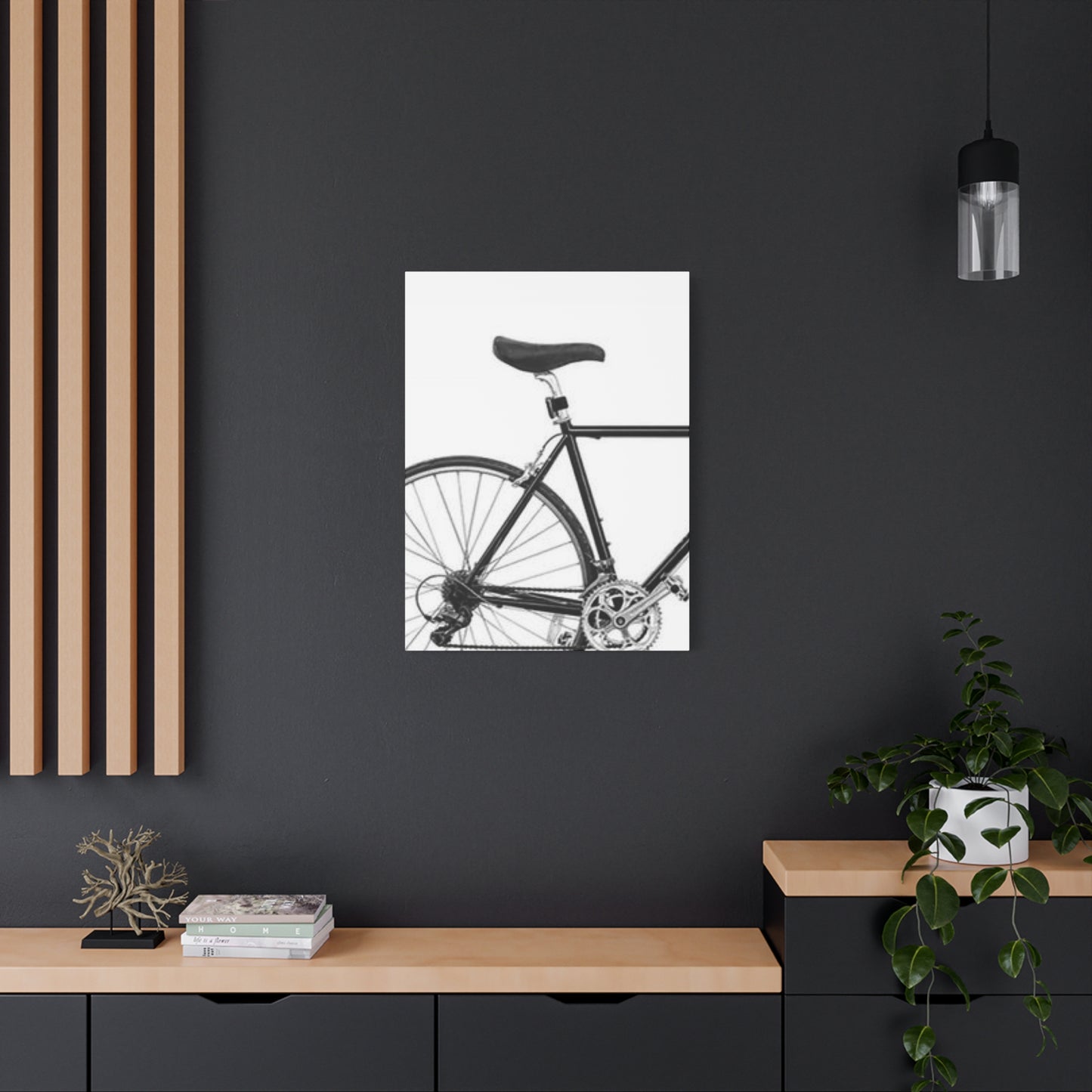Complete Guide to Bicycle Seat Wall Art: Creative Ideas and Inspiration
Interior decoration has evolved significantly over recent years, with homeowners constantly seeking innovative ways to express their personality and style preferences. One particularly fascinating trend that has captured the attention of design enthusiasts involves repurposing vintage cycling components into striking visual displays. The transformation of old bicycle saddles into decorative pieces represents more than just a creative endeavor; it embodies a commitment to sustainability while celebrating the rich heritage of cycling culture.
When you consider the possibilities of incorporating these unique elements into your living environment, the potential seems limitless. Each saddle carries its own story, bearing the marks of countless journeys and adventures. The weathered leather, aged metal springs, and distinctive shapes create an immediate visual impact that mass-produced decorations simply cannot match. These pieces serve as functional sculptures that bridge the gap between utilitarian objects and artistic expression.
The process of selecting and displaying these repurposed cycling components requires careful consideration of various factors including room aesthetics, color coordination, and spatial arrangement. Understanding how to properly showcase these items ensures they become focal points rather than cluttered additions to your space. The beauty lies in their versatility, as they complement numerous design styles from contemporary minimalism to rustic farmhouse themes.
Many enthusiasts discover that incorporating these salvaged components into their decor sparks meaningful conversations with guests. Visitors naturally gravitate toward these unusual pieces, inquiring about their origins and the stories behind them. This interactive quality transforms your living space into a gallery of personal expression, where each element has been thoughtfully curated to reflect your values and interests.
The environmental benefits of choosing upcycled decorations cannot be overstated in our current climate-conscious era. Rather than purchasing newly manufactured items that consume resources and energy, selecting reclaimed cycling parts reduces waste while supporting circular economy principles. This approach aligns perfectly with the growing movement toward sustainable living practices that prioritize reuse and creative repurposing over constant consumption.
Moreover, the accessibility of these materials makes this decorating approach feasible for various budgets. Whether you scout local flea markets, browse online marketplaces, or salvage components from your own retired bicycles, the investment remains relatively modest compared to commissioned artwork or designer pieces. The true value emerges from the creative vision and personal touch you bring to the arrangement and presentation.
Reasons Bicycle Saddles Create Outstanding Upcycled Decorative Elements
The inherent characteristics of bicycle saddles make them exceptional candidates for artistic transformation. Their sculptural quality stems from decades of engineering refinement aimed at balancing comfort, durability, and aerodynamics. This functional design history translates beautifully into visual appeal when these components transition from practical use to decorative display.
Examining the construction of vintage saddles reveals remarkable craftsmanship that modern manufacturing often overlooks. Skilled artisans once hand-stitched leather coverings, carefully formed metal frameworks, and installed coil springs with meticulous attention to detail. These elements combine to create objects with genuine character and authenticity that resonates with viewers on an instinctive level. The patina developed through years of use adds depth and texture impossible to replicate artificially.
The compact dimensions of bicycle saddles provide significant advantages for decorators working with limited wall space. Unlike oversized canvases or bulky sculptures, these components offer substantial visual interest without overwhelming smaller rooms or crowded areas. Their manageable size also facilitates creative grouping arrangements, allowing you to develop sophisticated gallery walls featuring multiple pieces in complementary configurations.
Material diversity represents another compelling aspect of working with cycling components. Leather saddles bring warmth and organic texture, while metal-framed versions contribute industrial edge and mechanical beauty. Some pieces feature unique materials like canvas, synthetic coverings, or even carved wooden bases, expanding the palette of textures and finishes available for your creative compositions. This variety ensures you can find pieces that harmonize with your existing furniture and color schemes.
The nostalgic appeal of vintage cycling equipment taps into powerful emotional connections for many people. These objects evoke memories of childhood adventures, family bike rides, and the simple pleasure of pedaling through neighborhoods on sunny afternoons. Displaying them prominently in your home creates an atmosphere of warmth and approachability that sterile, contemporary decor sometimes lacks. They serve as gentle reminders of simpler times and outdoor experiences.
From a practical standpoint, bicycle saddles prove remarkably durable and low-maintenance as decorative elements. Their original purpose required them to withstand weather exposure, weight-bearing stress, and constant friction, resulting in robust construction that endures for decades. When mounted securely on walls, they require minimal upkeep beyond occasional dusting, making them ideal for busy households seeking stylish yet practical decoration solutions.
The three-dimensional quality of saddles creates engaging shadow play and visual depth that flat artwork cannot achieve. As natural and artificial light shifts throughout the day, these mounted components cast evolving shadows and highlight different textures, ensuring your display never appears static or boring. This dynamic quality keeps the visual interest fresh and continually engaging.
Prime Bicycle Saddle Displays for Enthusiasts of Classic Aesthetics
Vintage design aficionados recognize the special appeal that aged cycling components bring to carefully curated interiors. The search for perfect pieces often becomes an enjoyable treasure hunt through antique shops, estate sales, and specialized vintage sporting goods dealers. Understanding which eras and manufacturers produced the most visually striking saddles helps focus your collecting efforts effectively.
Early twentieth-century saddles frequently feature the most distinctive designs, with elaborate sprung mechanisms and luxurious leather coverings that reflected the premium transportation status bicycles once held. Brooks saddles from this period exemplify timeless elegance with their honeyed leather tones and classic riveted construction. These pieces integrate seamlessly into traditional interiors while adding unexpected elements to more contemporary spaces seeking vintage accents.
The mid-century modern period introduced streamlined saddle designs that emphasized clean lines and simplified forms over ornate details. These pieces appeal particularly to collectors favoring Scandinavian-inspired aesthetics or minimalist approaches. The subtle curves and reduced ornamentation allow the inherent beauty of materials and construction to take center stage, creating sophisticated focal points that never overwhelm surrounding decor.
Racing saddles from various decades offer dramatic visual impact through their extreme shapes and specialized construction. The elongated profiles and narrow widths create striking silhouettes when mounted on walls, especially when arranged in series to illustrate the evolution of cycling technology. Chrome-plated rails and colorful coverings from different racing eras provide opportunities for bold color statements or metallic accents within your overall design scheme.
Children's bicycle saddles present delightful options for playful displays in family spaces or creative work areas. The smaller scale and often whimsical designs, including character themes and vibrant colors, inject personality and lightheartedness into rooms that might otherwise feel too serious or formal. These pieces work particularly well in eclectic interiors that celebrate mixing high and low elements with confident abandon.
Touring saddles designed for long-distance comfort often feature generous proportions and substantial padding that create impressive three-dimensional presence on walls. The broader profiles and deeper contouring provide excellent opportunities for dramatic lighting effects and shadow play. These sturdy components also tend to display the most honest wear patterns, with creases and indentations that map the journeys they supported.
Women's vintage saddles deserve special mention for their distinctive wide-sprung designs and decorative details. Manufacturers once adorned these pieces with intricate stitching patterns, embossed designs, and sometimes even decorative studs or badges. The aesthetic refinement evident in these components reflects cultural attitudes about cycling and femininity from different historical periods, adding layers of cultural interest to their visual appeal.
Creating Personalized Bicycle Saddle Displays for Your Living Space
Developing custom installations allows you to perfectly align these unique decorative elements with your specific vision and space requirements. The creative process begins with thoughtful selection of components that resonate with your personal aesthetic preferences and the atmosphere you wish to cultivate in your home. Consider the emotional response you want to evoke and the stories you hope to tell through your curated display.
The preparation phase involves carefully cleaning and preserving your selected saddles while respecting their aged character. Gentle cleaning with appropriate leather conditioners or metal polishes enhances their appearance without erasing the authentic patina that gives them charm. This delicate balance between restoration and preservation requires patience and respect for the objects' history and inherent beauty.
Mounting solutions range from simple approaches using existing saddle hardware to elaborate custom brackets designed to showcase particular features or achieve specific visual effects. Industrial pipe fittings create authentic mechanical aesthetics, while sleek modern mounts provide contemporary contrast. The mounting system you choose significantly impacts the overall presentation, so invest time in exploring options that complement both the saddles and your wall surface.
Background treatment deserves careful consideration as it dramatically influences how viewers perceive your display. Contrasting wall colors make saddles pop visually, while coordinating tones create subtle, sophisticated presentations. Textured wall coverings like reclaimed wood, brick, or concrete enhance industrial themes, while smooth painted surfaces suit minimalist or modern approaches. Lighting placement and intensity further refine the mood and visual impact.
Arrangement composition follows basic art principles of balance, repetition, and focal points. Single large saddles command attention as statement pieces, while grouped collections create rhythmic patterns and visual movement. Symmetrical arrangements convey formality and order, whereas asymmetrical compositions feel more dynamic and contemporary. Experimenting with spacing, heights, and orientations helps you discover configurations that feel naturally harmonious.
Incorporating complementary elements expands creative possibilities and adds contextual richness to your display. Vintage cycling posters, antique handlebar grips, or framed race photographs enhance the cycling theme while providing color and textual elements that pure saddle displays might lack. Small shelves supporting miniature bicycle models or cycling memorabilia create layered, museum-quality presentations that reward closer inspection.
Documentation of your creative process and final installation through photography preserves your achievement and provides material for sharing your vision with others. Quality images capture the details, textures, and overall impact of your work, allowing you to reflect on decisions and potentially inspire fellow enthusiasts. This documentation also proves valuable if you decide to reconfigure or expand your display over time.
Bicycle Saddle Displays Bringing Distinctive Character to Contemporary Rooms
Modern interior design increasingly embraces unexpected juxtapositions that create visual tension and interest. Incorporating vintage cycling components into sleek, minimalist spaces exemplifies this approach, offering organic texture and historical depth that balances the clean lines and neutral palettes typical of contemporary styling. The contrast between old and new creates sophisticated dialogues about time, craftsmanship, and aesthetic evolution.
The sculptural qualities of bicycle saddles align perfectly with modern art sensibilities that appreciate form, material, and negative space. When mounted against stark white walls or positioned within carefully composed vignettes, these objects function as genuine sculptures that happen to have functional origins. This recontextualization invites viewers to appreciate them purely as aesthetic objects rather than utilitarian equipment.
Color coordination in modern spaces often relies on restrained palettes with occasional bold accents. Vintage saddles provide opportunities to introduce rich brown leather tones, aged metal patinas, or surprising pops of color from original vinyl coverings. These natural hues complement the grays, whites, and blacks dominating contemporary interiors while adding warmth that prevents spaces from feeling cold or sterile.
The emphasis on sustainable practices in modern design philosophy makes upcycled components particularly appropriate for contemporary homes. Displaying reclaimed materials demonstrates environmental consciousness that aligns with progressive values many modern homeowners embrace. This ethical dimension adds meaningful depth to decorating choices, transforming aesthetic decisions into statements about responsibility and thoughtful consumption.
Open floor plans characteristic of modern architecture benefit from distinctive focal points that help define different functional zones without requiring physical barriers. A striking saddle display can anchor a reading nook, designate a home office area, or mark the transition between living and dining spaces. These visual markers guide circulation patterns and create psychological boundaries that enhance spatial organization.
The appreciation for artisanal craftsmanship in contemporary culture finds perfect expression in vintage cycling components. As mass production increasingly dominates consumer goods, handcrafted objects with visible construction details gain special significance. Displaying saddles that show evidence of skilled hand-stitching, careful riveting, and thoughtful material selection celebrates human creativity and dedication to quality that resonates deeply with modern audiences.
Technological integration presents interesting possibilities for enhancing these analog displays with digital elements. Hidden LED lighting can highlight textures and create dramatic effects, while smart home systems allow you to adjust illumination based on time of day or mood. These subtle technological enhancements respect the vintage nature of the components while demonstrating how old and new can coexist harmoniously.
Reimagined and Stylish Methods for Integrating Bicycle Saddles in Visual Displays
The upcycling movement has transformed how we perceive discarded objects, recognizing creative potential in items others might dismiss as worthless. Bicycle saddles represent prime candidates for this transformative process, offering substantial aesthetic value waiting to be unlocked through imaginative presentation. The key lies in seeing beyond their original purpose to appreciate their artistic possibilities.
Surface treatments expand the visual range of saddles while respecting their essential character. Careful application of leather dyes can refresh faded coverings or introduce new color dimensions that coordinate with your space. Metal components might receive clear protective coatings that preserve patina while preventing further deterioration, or selective polishing that highlights specific details. These subtle interventions enhance without overwhelming the authentic aged qualities that make vintage pieces special.
Combining saddles with other reclaimed materials creates mixed-media pieces with enhanced visual complexity and narrative depth. Mounting saddles on weathered barn wood backing boards establishes rustic contexts, while sleek metal plates provide industrial frameworks. Incorporating vintage maps, aged paper, or cycling-related ephemera behind or around saddles builds layered compositions that reward extended viewing and contemplation.
Dimensional arrangements that project saddles away from walls create sculptural installations with greater physical presence. Custom armatures can position multiple saddles at varied depths and angles, generating complex shadow patterns and encouraging viewers to appreciate them from multiple perspectives. These three-dimensional approaches transform simple wall decorations into legitimate art installations that command attention and spark discussion.
Functional integration represents an advanced approach where saddles serve dual purposes as decoration and practical furniture elements. A sturdy saddle mounted on appropriate hardware can function as a unique coat hook, towel holder, or even a quirky stool. This philosophy honors the objects' utilitarian origins while proving that beauty and function need not exist separately.
Seasonal rotation keeps your displays fresh and responsive to changing moods and occasions. Lighter colored leather saddles might take prominence during spring and summer months, while darker, more substantial pieces feel appropriate for fall and winter. Incorporating seasonal accessories like dried flowers, holiday ornaments, or thematic props around your saddle displays maintains visual interest throughout the year.
Collaborative projects with local artists or craftspeople can elevate saddle displays to gallery-worthy installations. Metalworkers might create custom mounting systems or complementary sculptural elements, while painters could develop coordinating canvases that reference cycling themes. These partnerships blend different creative perspectives and skill sets, resulting in truly unique pieces impossible to replicate.
The Craft of Merging Utility and Aesthetics with Bicycle Saddles
Historical perspective reveals that the boundary between functional objects and artistic creations has always been fluid and culturally determined. Bicycle saddles embody this intersection perfectly, having been engineered for specific performance requirements while also receiving aesthetic consideration from manufacturers who understood visual appeal mattered to consumers. Displaying them as art honors both dimensions of their existence.
The design evolution of saddles traces broader trends in industrial design, material science, and manufacturing capabilities. Early saddles reflected leather-working traditions and blacksmithing techniques, while later versions incorporated synthetic materials and advanced ergonomic research. Presenting saddles from different eras in chronological arrangements creates educational displays that illustrate technological and aesthetic progression through tangible objects.
Material honesty represents a core principle connecting functional design and artistic integrity. Quality saddles never pretend to be something they are not, with construction methods and materials clearly evident rather than hidden beneath decorative veneers. This transparency appeals to contemporary sensibilities that value authenticity and straightforward expression over pretense and artifice.
The problem-solving creativity evident in saddle design mirrors the ingenuity required in artistic practice. Engineers who developed novel springing mechanisms, ventilation systems, or mounting standards demonstrated the same innovative thinking that artists apply to compositional challenges or technical obstacles. Recognizing and celebrating this parallel creativity deepens appreciation for these objects beyond their surface appearance.
Ergonomic considerations that shaped saddle forms created the sculptural qualities we now admire aesthetically. The curves supporting human anatomy, the angles accommodating pedaling motion, and the proportions balancing comfort with efficiency all contribute to visually satisfying shapes. This demonstrates how functional requirements can generate beautiful forms when approached with skill and sensitivity.
The tactile dimension of saddles invites physical interaction that most wall-mounted art discourages. While you would not touch museum paintings, mounted saddles can be appreciated through careful handling that reveals texture variations, construction details, and material qualities. This hands-on engagement creates more intimate connections with displayed objects than purely visual appreciation allows.
Maintenance requirements for functional saddles informed their durable construction, which now benefits their longevity as decorative pieces. Understanding original care practices helps preserve these objects appropriately as display items. This continuity between past utility and present decoration maintains respect for the objects' origins while adapting them to new purposes.
Bicycle Saddle Displays as Eco-Friendly Answers for Green Living Spaces
Environmental consciousness increasingly influences decorating decisions as more people recognize the connections between consumption patterns and planetary health. Choosing salvaged cycling components for home decoration represents a meaningful step toward reducing waste streams while creating beautiful living spaces. This approach demonstrates that sustainability and aesthetic sophistication can coexist comfortably.
The lifecycle extension achieved through creative reuse prevents functional materials from entering landfills prematurely. Bicycle saddles contain valuable resources including leather, metal alloys, and sometimes rubber or synthetic materials that required significant energy and water inputs during original production. Giving these components decorative second lives maximizes the value extracted from those initial resource investments.
Carbon footprint considerations favor reclaimed decor over newly manufactured alternatives. Vintage saddles already exist, requiring no additional manufacturing energy or transportation from distant factories. Local sourcing from nearby salvage yards, estate sales, or online regional marketplaces further minimizes transportation emissions. The environmental cost of your decoration shrinks to essentially zero beyond whatever minimal processing you perform.
Supporting circular economy principles through purchasing decisions encourages systemic change in how goods are produced and consumed. When consumers demonstrate preference for upcycled products, markets respond by developing more robust infrastructure for collection, redistribution, and creative transformation of used goods. Your decorating choices participate in this larger economic shift toward sustainability.
Educational opportunities arise naturally when guests inquire about your unique displays. Conversations about where you sourced components, why you chose upcycling, and how the process worked spread awareness about sustainable living practices. Your home becomes a demonstration space showing that environmental responsibility does not require sacrifice of beauty or personal style.
The durability inherent in quality vintage components means your decorating investments will last for decades with minimal maintenance. This longevity contrasts sharply with disposable decor trends that encourage frequent replacement and generate continuous waste. Building a home environment around lasting pieces reduces long-term consumption while creating more stable, thoughtfully developed aesthetics.
Mindfulness about material origins and lifecycle impacts extends beyond specific objects to influence broader household practices. Starting with upcycled wall decorations often leads people to consider similar approaches for furniture, lighting, and other home elements. This ripple effect multiplies the positive environmental impact of initial small choices.
Methods Bicycle Saddle Displays Enhance Character in Your Living Area
Living rooms serve as central gathering spaces where families relax and entertain guests, making them ideal locations for distinctive decorative elements that spark conversation and reflect personal values. Bicycle saddle displays bring immediate visual interest to these important rooms while conveying messages about creativity, sustainability, and appreciation for craftsmanship that enhance the overall atmosphere.
Placement considerations in living rooms require attention to sight lines, furniture arrangements, and traffic flow patterns. Positioning saddles above seating areas creates natural focal points visible from main conversation spots without interfering with circulation paths. The height placement should facilitate comfortable viewing from seated positions while maintaining appropriate relationships with other wall-mounted elements like mirrors or shelving.
Scale relationships between saddle displays and surrounding furniture prevent pieces from appearing lost or overwhelming. A single dramatic saddle might anchor a large wall behind a substantial sofa, while smaller grouped arrangements work better in intimate seating nooks or between windows. Maintaining proportional balance ensures your displays enhance rather than compete with existing furnishings.
Color harmonies between saddle tones and living room palettes create cohesive visual environments. Rich brown leather saddles complement warm color schemes featuring terracotta, gold, or burgundy accents, while black or chrome components suit cooler palettes with blues, grays, or greens. Identifying these connections ensures your displays feel intentional rather than random additions.
Thematic consistency strengthens the impact of your decorating choices. If your living room embraces industrial aesthetics with metal furniture and exposed materials, multiple metal-framed saddles reinforce that design language. Conversely, a single vintage leather saddle might serve as a surprising counterpoint in an otherwise contemporary space, creating intriguing visual tension.
Lighting design dramatically affects how saddle displays appear and the moods they generate. Directional spotlights emphasize three-dimensional forms and create dramatic shadows, while diffused ambient lighting produces softer, more subtle presentations. Adjustable lighting systems provide flexibility to modify the display's intensity based on time of day or occasion.
Personal narrative elements transform generic decoration into meaningful expression. Perhaps the displayed saddle came from your childhood bicycle or was salvaged during memorable travels. Sharing these stories with guests creates emotional connections that mass-produced artwork cannot replicate. Your living room becomes a space where personal history is visible and celebrated.
Employing Bicycle Saddles for Crafting Industrial-Style Wall Decorations
Industrial design aesthetics celebrate the honest expression of materials, visible construction methods, and references to manufacturing processes. Bicycle saddles align perfectly with these principles, having been produced in factories using mechanical processes that left clear marks and evidence of their making. Incorporating them into industrial-themed spaces feels natural and authentic rather than forced.
Material palettes in industrial interiors typically emphasize metals, leather, concrete, and wood in their raw or minimally processed states. Bicycle saddles naturally contribute several of these materials while introducing human scale and organic curves that soften the sometimes harsh geometry of industrial environments. This balance prevents spaces from feeling cold or unwelcoming despite their utilitarian inspiration.
Mechanical details visible in saddle construction become design features worth highlighting in industrial contexts. The coil springs, adjustment mechanisms, mounting hardware, and riveted joints all reference manufacturing traditions and engineering solutions. Positioning saddles where these elements receive attention celebrates the ingenuity and craftsmanship embedded in everyday objects.
Exposed brick walls, concrete surfaces, and metal panels provide ideal backgrounds for saddle displays in industrial spaces. The textural contrast between smooth leather or painted saddle surfaces and rough masonry or weathered metal creates visually engaging compositions. Material juxtapositions like these exemplify industrial design's appreciation for authentic material expression.
Vintage factory aesthetics inspire display approaches that reference how saddles might have appeared in manufacturing or retail contexts. Mounting multiple saddles in rows suggests inventory storage or showroom displays, while incorporating vintage signage, price tags, or manufacturer labels adds layers of historical reference. These contextual elements enrich the industrial narrative your space communicates.
Lighting choices in industrial interiors often feature exposed bulbs, metal fixtures, and adjustable task lighting that doubles as design elements. Positioning these functional light sources to illuminate saddle displays serves practical and aesthetic purposes simultaneously. The visible hardware and utilitarian character of industrial lighting complements the straightforward functionality inherent in bicycle components.
Color restraint typical of industrial palettes allows the natural tones of vintage saddles to stand out effectively. Against backgrounds of gray, black, or white, the warm browns of aged leather or the cool gleam of chrome rails provide welcome color variation without introducing jarring contrasts. This subtle chromatic strategy maintains industrial sophistication while preventing monotony.
Building a Personal Bicycle Saddle Display Gallery
Gallery wall concepts translate beautifully to bicycle saddle displays when approached with the same compositional care applied to traditional artwork arrangements. The three-dimensional nature of saddles adds complexity to planning but also creates opportunities for dynamic presentations impossible with flat frames. Success requires balancing visual weight, color distribution, and spatial relationships.
Initial planning benefits from creating full-scale mock-ups using paper templates representing each saddle's size and shape. Arranging these templates on the intended wall surface allows experimentation with various configurations without creating permanent mounting holes. This trial process reveals spacing issues, balance problems, or opportunities for improvement before committing to final placement.
Variety within unity represents a guiding principle for successful gallery arrangements. Including saddles from different eras, styles, and conditions creates visual interest through diversity while maintaining coherence through their shared identity as bicycle components. This balance prevents displays from appearing either monotonously similar or chaotically random.
Grid arrangements provide structured frameworks that accommodate saddle variations while maintaining overall order. Strict grids feel formal and deliberate, while loose grids with occasional breaks introduce casualness without sacrificing organizational clarity. The grid intervals you choose affect density and breathing room, with tighter spacing creating intensity and looser arrangements feeling more relaxed.
Asymmetrical salon-style hangings offer more organic, collected-over-time aesthetics that suit eclectic interiors. These arrangements build around a central focal piece, with smaller or less dramatic saddles orbiting in considered relationships. Maintaining consistent spacing between pieces and respecting alignment opportunities prevents salon arrangements from devolving into visual chaos.
Incorporating negative space prevents gallery walls from overwhelming viewers with excessive visual information. Strategic gaps give eyes places to rest and allow individual pieces to receive proper attention. The empty areas become active compositional elements that shape how viewers navigate through the display visually.
Evolution plans acknowledge that collections grow and interests shift over time. Leaving expansion room or designing modular arrangements facilitates adding new pieces without completely reconfiguring existing displays. This flexibility accommodates natural collecting tendencies while maintaining coherent presentation standards.
Understanding the Historical Background of Bicycle Saddle Display Concepts
The transformation of utilitarian objects into decorative elements reflects broader cultural movements valuing authenticity, sustainability, and connection to material culture. Bicycle saddles joined this trend as cycling heritage gained recognition as worthy of celebration and preservation. Understanding this history provides context for contemporary practices and appreciation for the creative vision of pioneering decorators.
Early examples of bicycle component decoration emerged within cycling culture itself, as enthusiasts displayed prized equipment from famous races or retired personal bicycles. These displays honored sporting achievements and preserved tangible connections to memorable experiences. The practice gradually expanded beyond cycling communities as general audiences recognized the aesthetic appeal of well-designed equipment.
Museum exhibitions documenting cycling history legitimized bicycle components as worthy subjects for serious display and study. Curatorial decisions to present saddles, frames, and accessories as culturally significant artifacts influenced broader perceptions about their value beyond functional roles. This institutional validation encouraged private collectors and decorators to view bicycle equipment through artistic lenses.
Industrial design recognition elevated certain bicycle manufacturers and their products to iconic status paralleling celebrated furniture designers or architects. Brooks, Ideale, and other renowned saddle makers gained reputations transcending cycling circles, with design museums adding their products to permanent collections. This critical attention established vintage saddles as legitimate collectibles with aesthetic merit independent of sporting utility.
Sustainable living movements accelerated interest in upcycling practices across all household domains. As environmental awareness grew, creative reuse of existing materials became philosophically important beyond practical considerations. Bicycle saddles represented visible symbols of this ethos, demonstrating that discarded objects could find new purposes through imaginative thinking.
Social media platforms provided unprecedented opportunities for sharing creative projects and inspiring others. Images of innovative saddle displays spread rapidly through design-focused communities, creating feedback loops where creative individuals built upon each other's ideas. This collaborative evolution generated increasingly sophisticated approaches to sourcing, preparing, and presenting bicycle components.
Commercial design services began offering curated vintage cycling components specifically for decoration, recognizing market demand for distinctive home accessories. This professionalization brought higher quality examples to broader markets while establishing pricing structures that reflected aesthetic value rather than merely utility. The commercial validation further cemented saddles' status as legitimate decorative elements.
Methods for Incorporating Bicycle Saddle Displays into Free-Spirited Home Environments
Bohemian design sensibilities embrace eclecticism, global influences, and layered textures that create visually rich environments celebrating individuality and creativity. Bicycle saddles integrate naturally into these relaxed, artistic spaces, contributing vintage character and organic materials that complement boho aesthetics. The key involves balancing saddles' structured forms with the flowing, informal qualities typical of bohemian interiors.
Textile layers form the foundation of most bohemian spaces, with rugs, throws, pillows, and wall hangings creating softness and warmth. Bicycle saddles add dimensional contrast to these fabric-heavy environments, their sculptural leather forms and metal frames providing visual anchors amid flowing textiles. This material diversity prevents spaces from becoming too soft or undefined while maintaining overall warmth.
Color approaches in boho environments typically favor rich, saturated hues inspired by global folk traditions and natural dyes. Vintage saddles in brown leather tones ground these vibrant palettes with neutral stability, while colored vinyl coverings on mid-century saddles can echo or complement surrounding textiles. The flexibility to incorporate saddles at various points along the color spectrum makes them versatile boho accessories.
Global references characterize bohemian style through artifacts, patterns, and motifs from diverse cultures. While bicycle saddles originate primarily from Western manufacturing traditions, their presence represents travel, movement, and connection across distances that align philosophically with boho cosmopolitanism. Framing them alongside objects from various traditions emphasizes universal themes of human creativity and craftsmanship.
Plant integration softens industrial objects and creates organic flow throughout bohemian spaces. Positioning trailing plants on shelves above or beside saddle displays, or incorporating dried flowers and botanical elements into mixed arrangements helps saddles feel harmonious with nature-focused boho aesthetics. These combinations celebrate both natural and human-made beauty.
Vintage finds form the backbone of authentic bohemian interiors, with flea market discoveries and family heirlooms creating collected-over-time aesthetics. Bicycle saddles fit perfectly into this treasure-hunting approach, each representing a unique find with individual character. The hunt for perfect pieces becomes part of the decorating pleasure, not just the end results.
Artistic experimentation represents core bohemian values, encouraging unconventional approaches and personal expression over adherence to rules. This freedom allows for playful saddle presentations that might seem too casual or quirky for formal settings. Painting saddles, adding decorative elements, or incorporating them into larger mixed-media pieces all align with boho creative spirit.
The Mental Impact of Color Choices in Bicycle Saddle Displays
Color psychology explores how different hues affect human emotions, behaviors, and perceptions of space. When selecting and displaying bicycle saddles, understanding these color influences helps create intentional atmospheric effects that support desired moods and activities within different rooms. The naturally occurring colors in vintage saddles provide excellent palettes, while opportunities for modification expand possibilities.
Brown leather tones dominate vintage saddle aesthetics, carrying associations with earth, stability, reliability, and tradition. These warm neutrals create welcoming, comfortable environments that encourage relaxation and social interaction. In living rooms or family spaces, brown saddles contribute to cozy atmospheres without demanding excessive attention or creating visual stress.
Black saddles and dark metal components convey sophistication, formality, and dramatic impact. These strong presences work particularly well in spaces seeking bold statements or modern edge. The psychological weight of black elements grounds compositions and provides visual anchors that organize surrounding lighter elements into coherent schemes.
Red and other vibrant vinyl coverings occasionally found on vintage saddles inject energy, passion, and playfulness into displays. These attention-grabbing accents work best as focal points rather than repeated throughout collections, as their psychological intensity can overwhelm if overused. Strategic placement of colorful saddles draws eyes to specific locations and enlivens neutral surroundings.
Patina variations across metal components create subtle color shifts from bright chrome to aged brass, copper tones, or even rust oranges. These weathered finishes communicate history, authenticity, and organic process that synthetic recreations cannot replicate. Psychologically, patina suggests permanence, quality, and connection to past generations that appeals to our desire for meaningful belonging.
Green influences appear occasionally through oxidized metal components, introducing associations with nature, growth, and renewal. Though not common in saddle colorations, when present, these verdigris effects create distinctive visual interest and connect industrial objects to organic processes. The psychological freshness of green notes provides pleasant contrast to predominant earth tones.
White or light-colored saddles, though rare in vintage examples, offer opportunities for bright, airy displays that enhance feelings of spaciousness and cleanliness. The psychological openness of light colors makes them valuable in smaller rooms or darker spaces needing visual expansion. These uncommon finds become particularly prized for their ability to brighten environments.
Color coordination between saddles and surrounding decor establishes harmony or contrast depending on your goals. Matching existing color schemes creates cohesion and calm, while contrasting choices generate energy and visual excitement. Understanding these psychological effects allows strategic deployment of saddle colors to achieve specific atmospheric intentions.
Strategies for Matching Bicycle Saddle Displays with Simplified Furniture Styles
Minimalist design philosophy emphasizes reduction to essential elements, clean lines, and careful editing that eliminates visual clutter. Successfully incorporating bicycle saddles into these restrained environments requires thoughtful selection and presentation that respects minimalist principles while adding warmth and interest that prevents spaces from feeling sterile or impersonal.
Singular statement pieces align perfectly with minimalist aesthetics that prefer impactful items over accumulated collections. One exceptional vintage saddle, carefully chosen for its sculptural qualities and pristine condition, creates stronger visual impact than multiple lesser examples. This selectivity demonstrates the discernment and editing discipline central to minimalist philosophy.
Mounting approaches in minimalist spaces should embrace simplicity and invisibility, allowing saddles themselves to command full attention without distracting hardware. Sleek metal brackets finished to match wall colors, or innovative mounting systems that appear to suspend saddles without visible support, maintain the clean aesthetics minimalism demands. The goal involves creating floating appearances that emphasize object beauty.
Background simplicity provides crucial contrast that allows saddle forms to read clearly as sculptural objects. Pure white walls offer classic minimalist backdrops that make brown leather or black metal saddles stand out with maximum clarity. The negative space surrounding mounted saddles becomes as important as the objects themselves in minimalist compositions.
Material quality takes precedence over quantity in minimalist environments, with every element expected to demonstrate superior craftsmanship and design integrity. This standard requires sourcing saddles that exemplify excellent condition, classic proportions, and thoughtful construction. Damaged or mediocre examples that might work in eclectic settings appear out of place amid minimalist refinement.
Spatial relationships between saddles and furniture demand careful calibration in minimalist rooms where every distance and proportion receives scrutiny. The gap between a saddle and nearby shelf, the alignment with furniture edges, or the centering relative to architectural features all contribute to successful minimalist presentations. These precise spatial decisions separate amateur attempts from sophisticated results.
Functional justification strengthens minimalist inclusion of any decorative element. Presenting your saddle display as expression of cycling passion, commitment to sustainability, or appreciation for industrial design provides philosophical grounding that satisfies minimalist preference for meaning over arbitrary decoration. This conceptual foundation makes the presence feel purposeful rather than frivolous.
Growing Popularity of Bicycle Saddle Displays in City and Converted Living Areas
Urban loft spaces with their exposed brick, concrete floors, and open plans provide ideal environments for industrial-influenced decor including bicycle components. The architectural bones of these converted commercial buildings naturally complement the utilitarian origins and honest material expression of vintage saddles. This stylistic alignment explains the concentrated popularity of cycling component displays in metropolitan areas.
Industrial heritage shared between building structures and bicycle manufacturing creates authentic connections. Many lofts occupy former factories, warehouses, or workshops where bicycles might actually have been built, repaired, or stored historically. Displaying cycling components in these spaces honors their industrial past while bridging historical function with contemporary residential use.
Final Thoughts:
In the world of contemporary art and design, Bicycle Seat Wall Art offers a unique opportunity to blend the practical with the creative. At first glance, a bicycle seat might seem like an everyday object, but when transformed into a piece of art, it takes on new meaning—both functional and decorative. As we reflect on the various ways to incorporate bicycle seat art into our homes, it becomes clear that this unconventional medium offers endless possibilities for those looking to add personality, texture, and a touch of nostalgia to their walls.
One of the most compelling aspects of Bicycle Seat Wall Art is its ability to evoke a sense of movement, freedom, and adventure. The bicycle itself is a symbol of exploration, travel, and independence—values that resonate with people from all walks of life. When a bicycle seat is reimagined as art, it brings a piece of this adventurous spirit into the home. Whether it’s a vintage leather saddle that reminds us of past journeys or a sleek, modern seat that speaks to contemporary style, these artworks can instantly transform a room, infusing it with both history and modernity.
What makes bicycle seat wall art so versatile is its ability to fit seamlessly into a wide range of interior styles. For those who appreciate industrial or urban design, a bicycle seat mounted on a wall can evoke the rawness and charm of city life. Pairing it with exposed brick, metal fixtures, or vintage bicycles creates an urban vibe that feels grounded and authentic. On the other hand, for eclectic or bohemian spaces, the seat can be paired with other unique objects to create an interesting focal point that sparks conversation and curiosity. It can even be framed or mounted with mixed media to create a personalized, artistic statement.
Moreover, bicycle seat wall art offers endless opportunities for creativity. Artists and designers can experiment with materials, colors, and textures, turning a simple object into a work of art. For example, adding paint, fabric, or even transforming the seat into a sculptural piece gives it a whole new life, making it a bold statement in any room. The simple act of repurposing an object gives it a second chance, and by placing it on display, it becomes a reminder of how beauty can be found in the most unexpected places.
The process of turning a bicycle seat into art also taps into the growing trend of sustainability and upcycling in design. Rather than letting old or worn-out bicycle parts go to waste, they are given new purpose and value, making them more than just functional objects. This environmentally-conscious approach adds another layer of depth to the artwork, aligning with the increasing desire to create spaces that are both beautiful and responsible.
In the end, Bicycle Seat Wall Art is more than just a unique decoration—it’s a celebration of creativity, function, and the stories behind everyday objects. Whether you’re an avid cyclist, an art lover, or simply someone seeking to add a personal touch to your decor, bicycle seat art can be a captivating addition to any space. It’s a way to infuse your home with personality, spark conversation, and embrace the unexpected beauty of things we often overlook. From the heart of cycling culture to the walls of modern homes, bicycle seat wall art continues to inspire and elevate spaces in truly creative ways.









